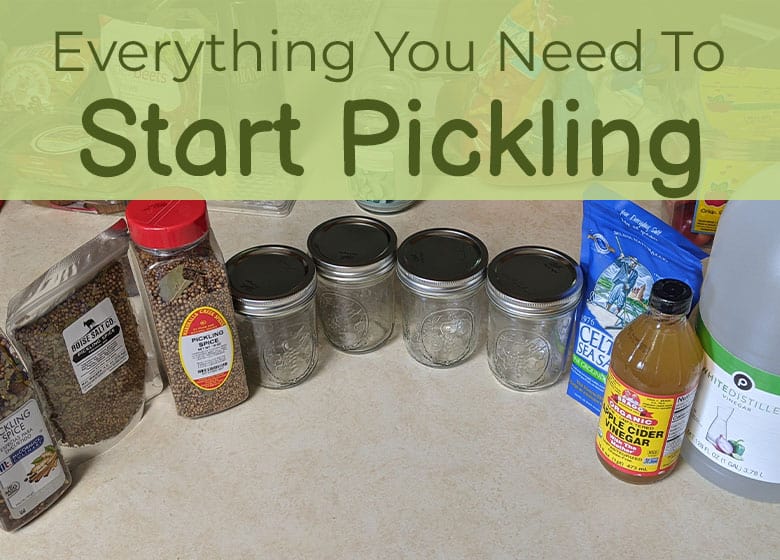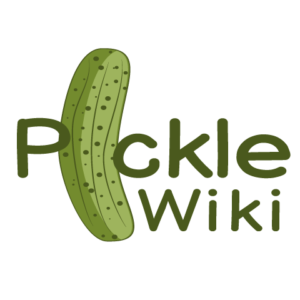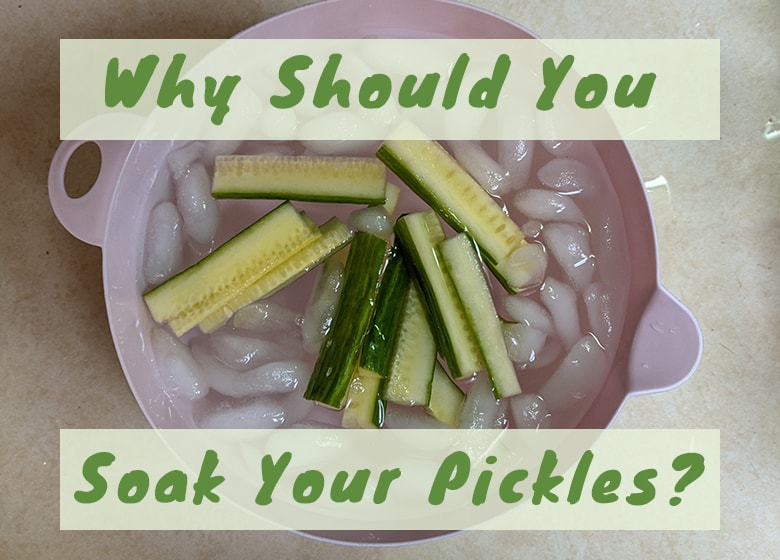Pickling season is upon us at last, and this ancient food preservation trend has seen a skyrocketing resurgence in popularity over recent years. One need only search the term “pickling” on the internet to discover a preponderance of pickling methods and recipes, which vary widely in methodology as well as difficulty. This may leave you with more questions still, like which soaking method is best?
When it comes to old-fashioned pickled cucumbers, the most common variable among dozens of recipes is to soak or not to soak before pickling. The best reason for soaking cucumbers before pickling them is to ensure their crispness.
However, you may be wondering why it is necessary to soak them before pickling when they are literally soaking in a solution during the pickling process, and what exactly to soak them in, since it seems there are many different methods. Let’s explore those perplexing pickle questions in greater depth.
Why Soak Cucumbers?
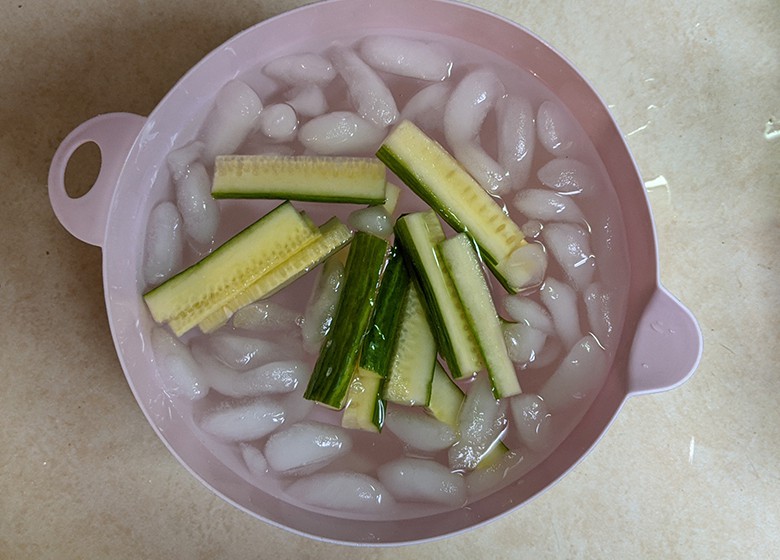
Any foodie knows that texture is everything. And when you think of a pickle, “crisp” and “Crunchy” come to mind, loud and clear. Taste becomes irrelevant when the texture is off. So, if you want your pickles palatable, you’ve got to make sure they stand up to the standard of consistency. The best way to do this, as we now know, is by soaking them.
Soaking cucumbers before submerging them in the jars filled with their final pickling solution will ensure that your pickles have that extra crunch when the time comes to bite into them.
Scanning the multitudes of recipes available online, it seems there is more than one way to soak a cucumber before pickling it. Read on for several soaking options you might consider to achieve the perfect pickles.
Do You Need to Soak Cucumbers Before Pickling?
That depends on which method of pickling you choose. If you are making fresh pickles, sometimes called refrigerator pickles, you do not need to soak the cucumbers first. However, you can soak them if you’d like. It certainly won’t hurt, but you can easily skip this step if you are short on time or patience and need pickles pronto.
With refrigerator pickles, you create a brine by adding salt to a water and vinegar solution, which you can then flavor with various herbs and spices. You then bring the brine to a boil, simmer for a bit, let it cool back down, and pour it over your cucumbers in the jar until they are completely submerged.
At that point, all that’s left to do is seal the jar and refrigerate at least overnight before eating. They will continue to increase in flavor as the days pass.
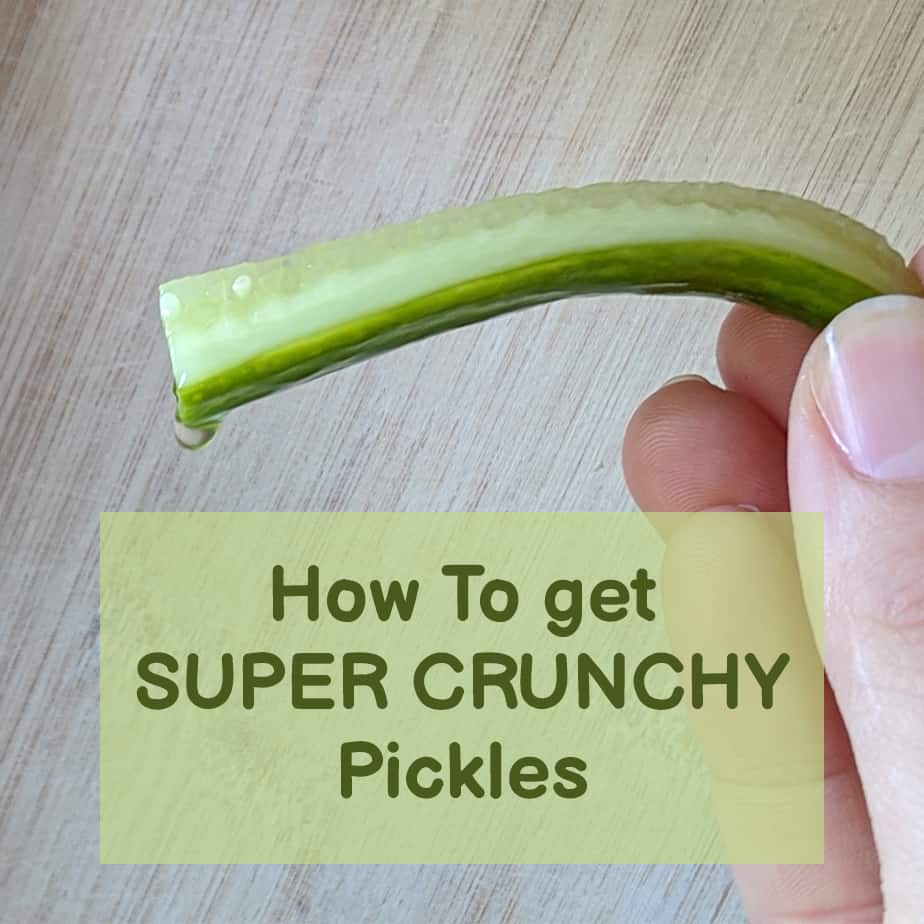
Ways to Soak Cucumbers Before Pickling
People have been pickling for more than 4000 years. Ancient Mesopotamians are said to have soaked their cucumbers in brine to preserve them, and Aristotle applauded pickles for their health perks. While Aristotle likely didn’t have the advantage of giving his cucumbers an ice bath before pickling, he would most presumably agree that nobody likes a soft, mushy pickle.
So, soak that cuke before you end up with a mouthful of disappointment later. Here are some ways you can crisp that cucumber up:
- Soak in Ice Water: Soak your cucumbers in ice water for four to five hours before pickling.
- Pickling Lime: Pickling lime has been used to soak cucumbers before pickling to add crispness, but it is mostly found in older recipes, like Grandma’s. Nowadays, people tend to avoid using it as it can lead to botulism. However, you can still find it, but be sure that if you are using it, you are following instructions explicitly.
- Alum: Another dated method, alum was commonly used to soak cucumbers to add firmness, but doesn’t do much for quick pickles. It is not a practice that is widely used today.
- Saltwater Brine: This method, also known as saltwater soaking, is used to pull out excess water from cucumbers before pickling, which will help prevent soggy pickles.
- Pickling Salt: Pickling salt, or sodium chloride, is a safer alternative to pickling lime. This is not the same as table salt; pickling salt does not contain anti-caking agents or iodine.
- Non-Iodized Table Salt: Non-iodized table salt can help prevent unappealing color change to your pickles.
- Kosher Salt: Kosher salt without additives is a suitable alternative for pickling salt. Be sure to check your recipe for substitution ratios.
NOTE: Salt is used for more than just flavoring when it comes to pickling. Salt is a necessary component of the fermentation process in that it promotes the growth of suitable bacteria and inhibits the growth of unsafe bacteria.
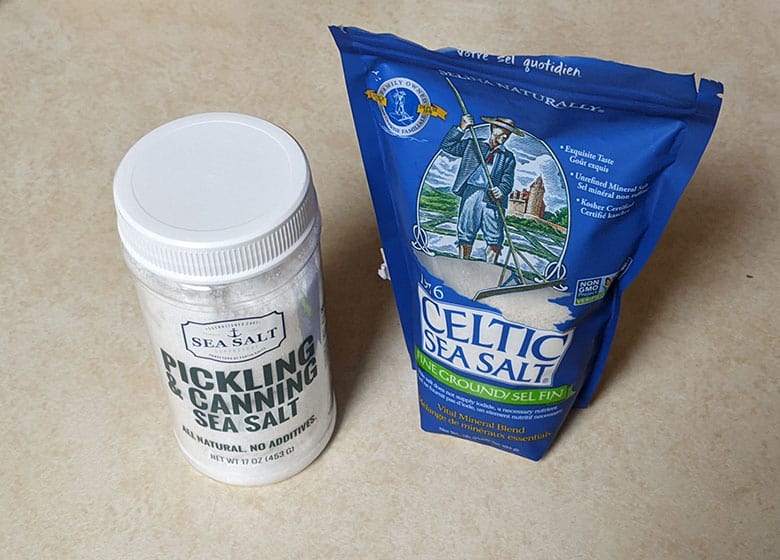
More Tips for Crisp Pickled Vegetables
Of course, there are many other factors at play in producing the perfect pickles. Be sure to keep these pointers in mind, and you should end up with pickles that do not disappoint.
- Start Fresh: Buy fresh, local produce. Why local, you ask? The more local, the more likely it’s fresh-picked. Never go for a rubbery or flexible cucumber. Once a cucumber has lost its firmness, it cannot become firm again, no matter what magical solution you soak it in.
- Choose the Right Produce: Choose cucumbers grown for pickling, and make sure they are the right size. A good recommendation is not to exceed two inches in diameter.
- Use Them ASAP: The shorter the time between picking and pickling, the crisper your pickle will be.
- Store them Properly: Store your cucumbers in the refrigerator if you are not going to process them straight away.
- Chill Your Cukes: Chill your cukes in the refrigerator to make them cold and crisp before processing.
- Remove Blossom Ends: Removing the blossom ends of the cucumber will help ensure its crispness. These ends contain an enzyme that can make for soft pickles if not removed.
- Do Not Overprocess: Once you’ve canned your cukes, go with the minimum processing time. Overprocessing them will ultimately cook your pickles, and you don’t want that.
- Refrigerator Pickles: This easy, no-can method is the least labor-intensive method you can find. Recipes abound online, and you can find refrigerator pickling mixes to make the task even more manageable, but the gist of it is that the cucumbers are soaked in a salt brine solution and then stored in the fridge for up to two months. It’s important to remember that these particular pickles cannot be left out at room temperature.
- Use a “Pickle Crisp” Mix: You can use a product like Ball’s Pickle Crisp to make perfect pickles. This saves you the trouble of having to soak vegetables overnight or running the botulism risk by using lime. I don’t know if this actually works or not. Have any of you used it?
Conclusion
This time of year, as the growing season comes to a close, you might be among the many who are working to preserve your garden bounty through the winter season by pickling. After picking the internet apart in search of all the perplexing pickling questions and answers about whether or not to soak your cucumbers prior to the pickling process, it seems safe to say that you can’t really go wrong with soaking them before pickling.
After all, if you’re going through the trouble of making pickles to begin with, you might as well go the extra step to ensure they pass the taste and texture test. Of course, when in a pinch and only a pickle will do, you can always opt for the refrigerator pickle method for a quick-pickle-fix, and it’s not that big of a dill.
